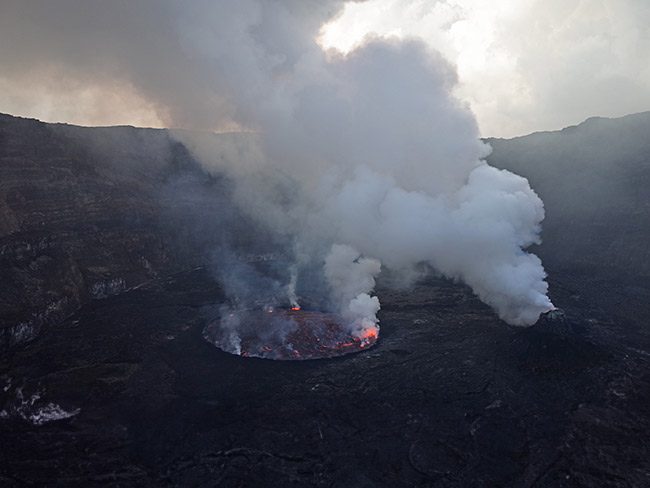Webinar GEO@EAIFR
March 20 2024
The East African Institute for Fundamental Research (EAIFR) and the International Centre for Theoretical Physics (ICTP) propose a GEO@EAIFR webinar. This seminar will take place on March 20, 2024 and will be broadcast live on ZOOM.
Speaker: Dr. Delphine Smittarello, European Center for Geodynamics and Seismology, Luxembourg
Title: An unpredictable eruption ? The mechanism behind the Nyiragongo 2021 eruption.
When: March 20, 2024 at 12:00 (Kigali time), 11h00 (Paris Time)
Register in advance for this meeting by clicking here (https://us02web.zoom.us/meeting/register/tZAkf-6rrTIsH9aojLKiMrWIH6hlFMk05hmt#/registration)
It will also be recorded and later posted on the ICTP-EAIFR YouTube channel, where one can find the previous recorded GEO@EAIFR webinars.
All are very welcome.
Short Biography: I completed my doctorate at ISTerre (France), working on the propagation of dikes with Virginie Pinel and Valérie Cayol (2016-2019). In 2020, I started working at ECGS (Luxembourg) as a postdoctoral researcher mainly focused on modeling ground deformation data. And since June 2022 I have been hired at ECGS as a permanent researcher.
Abstract: On 22 May 2021, Mount Nyiragongo (D.R. Congo), an open-vent volcano with a persistent lava lake perched within its summit crater, produced its third historically known flank eruption and the first ever to be recorded by dense measurements both on the ground and from space. The flank eruption started although no alarming precursory unrest had been reported which highlight the difficulty to monitor permanently erupting volcanoes. This ~6-hour-long flank eruption produced deadly lava flows and was followed–rather than preceded– by an intense seismic crisis strongly felt in the cities of Goma (D.R. Congo) and Gisenyi (Rwanda) where about 1 Millions inhabitants are living. Jointly analysing various in situ data (seismic, acoustic, GNSS, lava sampling) together with remote sensing (radar and multispectral imagery) allowed to characterize the mechanisms behind this eruption. Thus, a structural failure of Nyiragongo edifice most likely produced the ~6 hours long fissure effusion. Then the eruption stopped but the shallow feeder dike continued to propagate from the Nyiragongo edifice to beneath Goma and Gisenyi city centers then below the northern part of Lake Kivu. It finally stopped in front of a regional inherited structure called the Nyabihu fault and reactivated micro-tectonic seismicity in the whole Lake Kivu area. Our study highlights the shallow origin of the dike fed by the drainage of the lava lake plumbing system which led to the temporary disappearance of the world’s largest long-living lava lake. In addition, this volcanic crisis, raises new questions about the mechanisms controlling flank eruptions at Nyiragongo and the possibility to face substantially more hazardous events, such as effusions within densely urbanised areas, phreato-magmatism or a limnic eruption from the gas-rich Lake Kivu.


